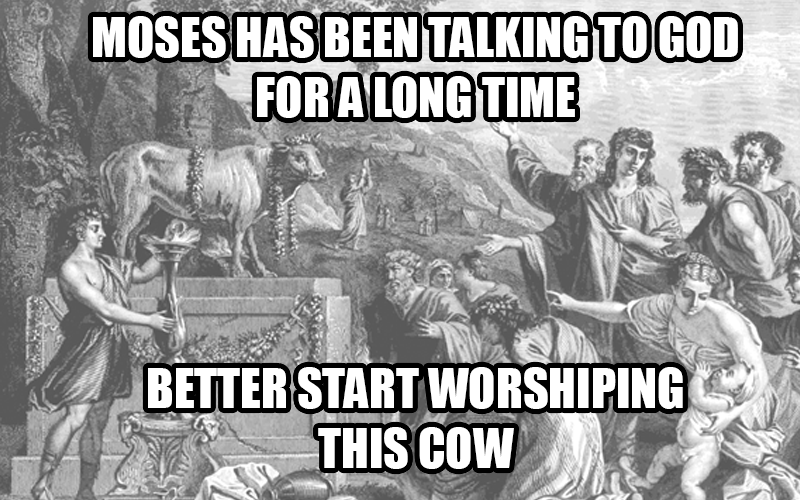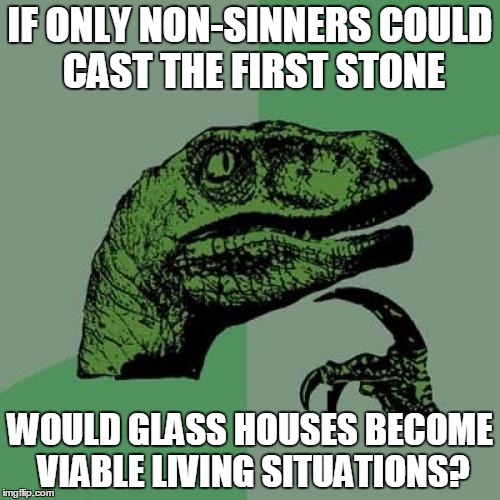[guestpost]Today’s post is written by Jeffrey Kranz and is sponsored by Disciplr: an interactive curriculum platform for youth ministry leaders. Check out our free interactive high school curriculum![/guestpost]
A few months ago a youth minister asked me, “How would you use digital tools to engage the middle-school boys in our youth group?” It’s a tough question, and we ended up talking about it for a good while. Tween boys may be the toughest group of kids to connect with in youth ministry.
One of the ideas we came up with? Memes.
If you’re trying to hold the attention of the guys in your youth group, or if you’d just like some ideas for sprinkling more humor into your youth ministry, this is for you! I’ll give you some ideas on how (and when) to use memes in your large groups and during the week, as well as a quick tutorial on how to make memes yourself. You’ll get a few fun ideas to add to any Sunday school lesson (no matter which curriculum you use.)
But just so we’re all on the same page: let’s start by defining a meme.
What is a meme?
According to the Merriam-Webster Dictionary, a meme is “an idea, behavior, or style that spreads from person to person within a culture.” However, when someone says “meme,” they’re likely referring to the “image macros”: basic images with funny text on top of them.
You’ve seen them. They look like this:
They’re everywhere, they’re easy to make, and they can be a great way to engage your youth group.
So we know what memes are—but what are they for?
Memes make stuff memorable by making it funny first
The memes that catch on are the funny ones. That means you’ll want to use these in your large groups when you come to certain parts of the message that have a lot of humorous potential.
Some good times to throw a meme into your presentation:
Use memes to emphasize bad decisions
Bad decisions happen all the time in the Bible. Kings ignore prophets. Pharisees try to stump Jesus. Dudes say weird things about their hands (1 Kings 12:10).
When stuff like this happens in the narrative, you can make it a lot more memorable by creating a quick meme out of it to illustrate.
For example, if you’re going through Exodus 32 (the story of the golden calf), you might want to call out just how bad of a decision it was for the Israelites to make an idol to worship. You could use this:
Use memes for unexpected conclusions
Sometimes a message will take an interesting turn (either from your youth group’s perspective or from the perspective of the characters within the story). A meme is a great way to call out the unexpected and give your youth group something to think about.
For example . . .
Use memes for the completely expected conclusions
Come on, Jonah: what did you think was going to happen when you ran in the other direction from where God told you to go?
A meme is a great way to call attention to the “duh” moments in Scripture—like when Joshua is ready to enter the promised land, but the Jordan River is too high for everyone to cross safely.
Don’t be the only one making memes
One of the reasons memes are still an enduring part of how people (of all ages) use the Internet is that anyone can make, modify, and share them.
That means you have a lot of opportunity to not only keep your youth group engaged on Sunday mornings, but also throughout the week.
For example, you might start a new tradition for your youth group:
- At the end of Sunday’s large group, tell the youth group to make their own memes based on the lesson or message.Theycan be anything, so long as they meet three criteria:
- They gotta be related to the message or lesson
- They gotta be appropriate
- They gotta be funny
- Have the youth tweet or Instagram their memes with a consistent hashtag. It could be straightforward (#YouthGroupMeme) or a little more playful (#BibleWut).
- Next Sunday, go through the memes that the youth created. Show them on the big screen: they’ll love seeing their creations integrated with the large group, plus, you’ll get some quality time to review last week’s lesson!
So, for example, let’s say you were teaching from the little book of Haggai last Sunday. Your students could create some fun memes like this one.
How to make a meme
Just in case you’re new on the meme scene, here are a few simple guidelines to keep in mind:
- Start with an image. If it’s not yours, make sure you have permission to use it. And if you’re using an existing meme image, make sure you know what the meme’s context is. (Not all memes are appropriate!) You can look up most memes on KnowYourMeme.com.
- Add text. Use the Impact font (preferably white with black outlines) and center-align it. Put one line at the top of the image to set up the situation, and one line at the bottom with the punch line.
- Boom! You’ve made a meme.
Let’s make some memes!
You can already see how using memes in youth ministry can be valuable. It’s a way to engage one of the most tough-to-engage groups. It’s also a creative mix of humor and learning—which makes your messages and large group times even more memorable!
Images taken from:
Horne, Charles, and Julius Bewer. The Bible and Its Story: The Law, Leviticus to Deuteronomy. Vol. 2. New York, NY: Francis R. Niglutsch, 1910.
The Lord of the Rings. New Line Home Entertainment, 2002. Film.
OverviewBible.com (which is my site): here and here.




